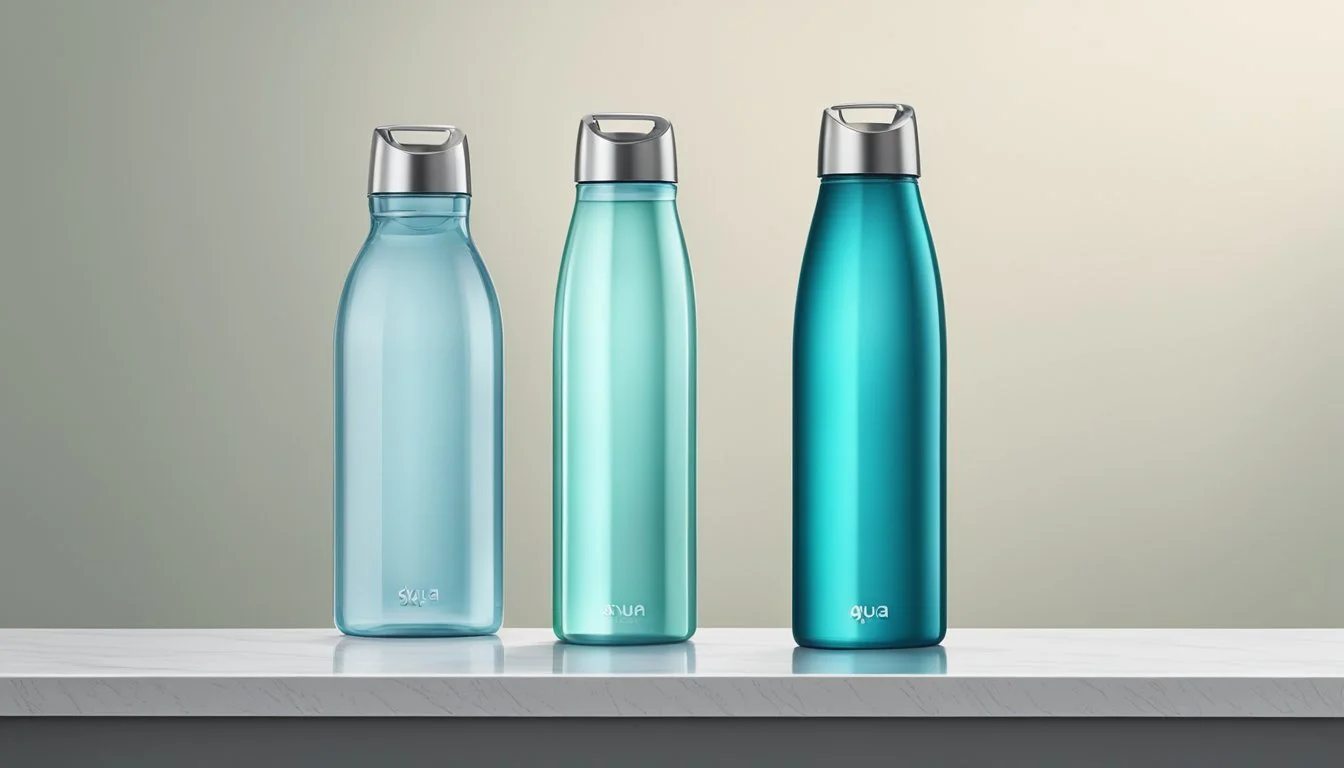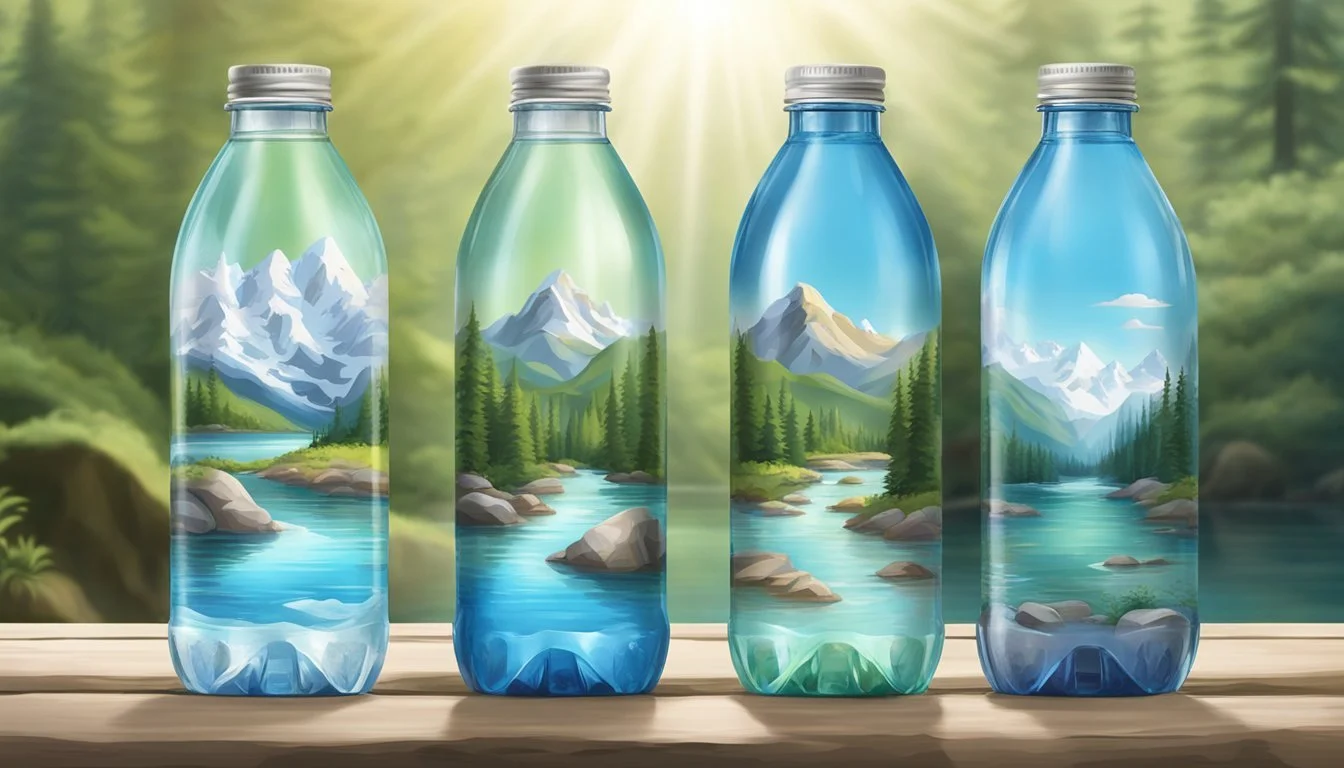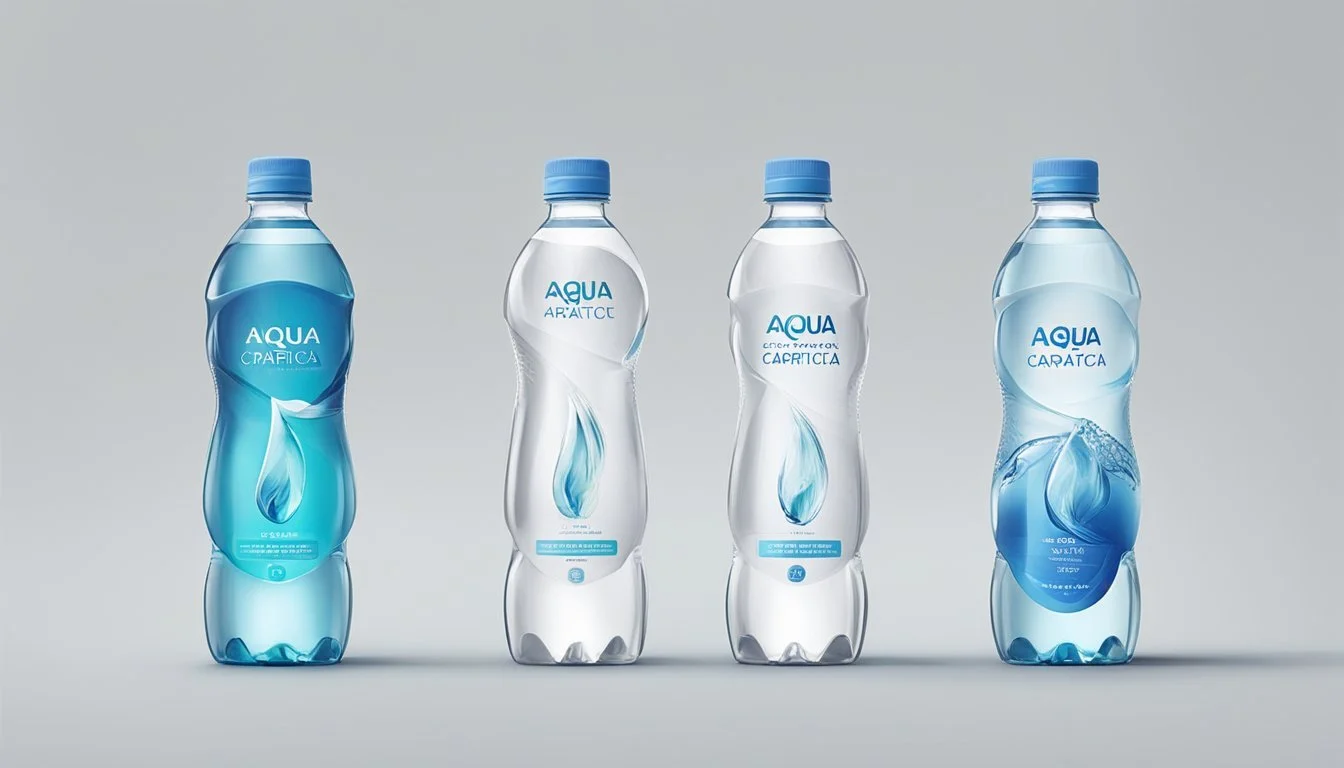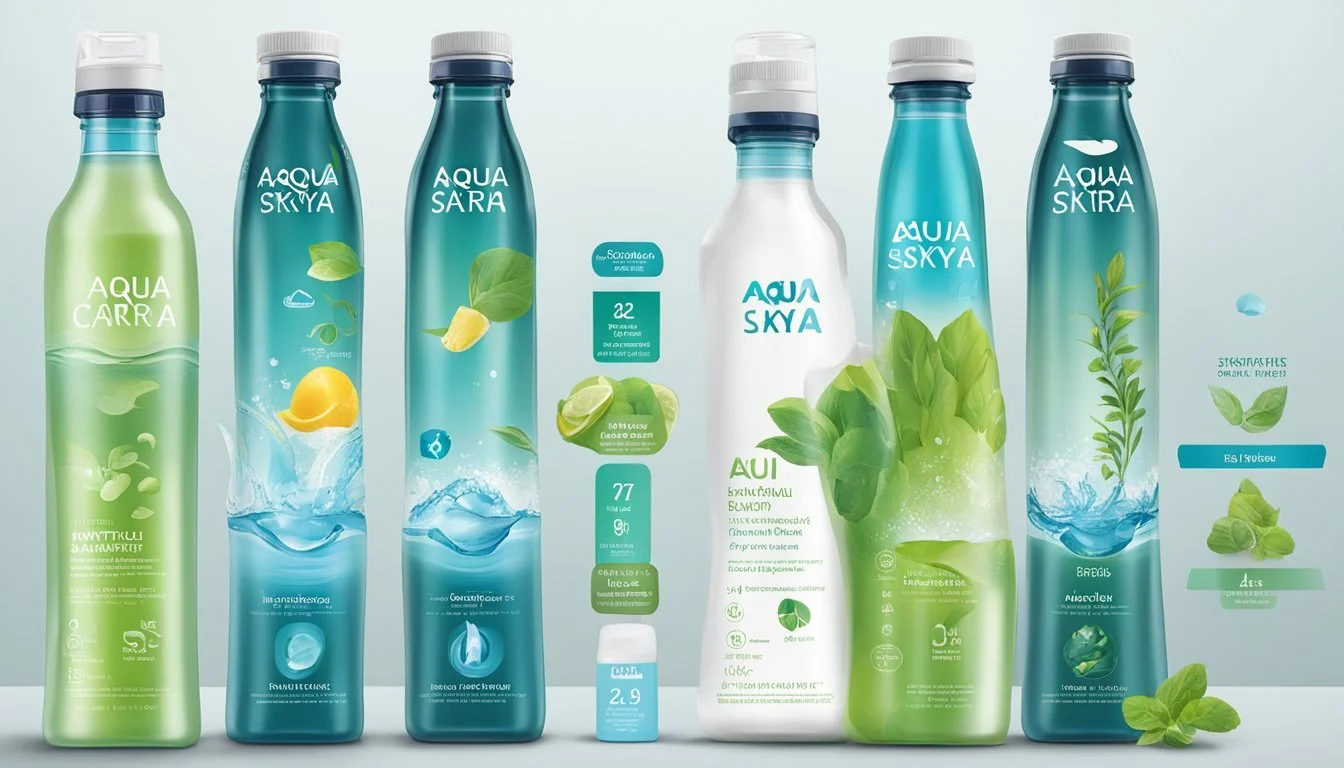Aqua Carpatica vs. Skyra
Ultimate Bottled Water Comparison
When choosing between AQUA Carpatica and Skyra, two premium bottled water brands, the decision hinges on several factors including taste, purity, and price. Both brands offer unique features that appeal to different preferences and priorities. AQUA Carpatica is praised for its nitrate-free benefits and reasonable pricing, making it an attractive option for health-conscious consumers.
Skyra bottled water, originating from Iceland, boasts a naturally high pH of 8.88 and is known for being filtered through basalt and lava, which adds to its appeal for those seeking a mineral-rich water. For those prioritizing a higher pH level combined with a natural filtration process, Skyra emerges as the superior choice.
Customers who value affordability without compromising on purity might find AQUA Carpatica more appealing. With its competitive pricing and health benefits, AQUA Carpatica provides an excellent alternative for everyday hydration needs.
The Importance of Hydration and Bottled Water
Hydration is crucial for maintaining optimal health. Every system in the body depends on water to function properly, from flushing out toxins to aiding in digestion.
Staying hydrated helps manage physical performance. Dehydration can lead to fatigue, muscle cramps, and even more severe health issues.
Bottled water offers a convenient solution for hydration. Many people prefer bottled water for its perceived purity and taste.
Different types of bottled water are available, including those enhanced with minerals or electrolytes. These can contribute essential nutrients that support overall well-being.
Advantages of Bottled Water:
Convenience: Easily accessible and portable.
Quality Control: Often subjected to stringent testing.
Variety: Available with added nutrients.
Choosing bottled water can help ensure a safe and reliable source of hydration, especially in areas where tap water quality is questionable.
Table: Comparison of Water Types
Type Cost per Gallon Advantages Tap Water ~$0.005 Free, easily accessible Bottled Water ~$9.47 Convenient, high purity, added nutrients
Hydration Benefits:
Enhances physical performance
Aids in digestion
Keeps skin healthy
Supports kidney function
Hydrating regularly with bottled water can be a practical choice for those leading busy lives or involved in physical activities.
Understanding Water Quality Indicators
Several indicators determine the quality of bottled water. Key factors include pH balance, Total Dissolved Solids (TDS), and mineral content such as calcium and magnesium. These elements impact both the taste and health benefits of the water.
pH and Its Significance
pH measures the acidity or alkalinity of water. The scale ranges from 0 to 14, with 7 being neutral. A pH level above 7 is considered alkaline, while below 7 is acidic.
Importance: Proper pH balance can affect the water's taste and potential health benefits.
Skyra: Skyra bottled water has a pH balance of 8, making it alkaline.
Aqua Carpatica: Typically boasts a neutral to slightly alkaline pH, which is generally preferred for consumption.
TDS: Total Dissolved Solids Explained
TDS indicates the total concentration of dissolved substances in water. These solids include minerals, salts, and other compounds.
Significance: High TDS levels can impact taste and may include beneficial minerals.
Optimal Levels: The Environmental Protection Agency (EPA) recommends a TDS level of no more than 500 mg/L for drinking water.
Brands Comparison: Both Skyra and Aqua Carpatica maintain TDS levels within recommended limits, prioritizing both taste and health benefits.
Minerals for Health: Calcium and Magnesium
Calcium and magnesium are essential minerals found in many bottled waters. They contribute to various bodily functions and enhance the taste.
Calcium: Beneficial for bone health and plays a role in muscle function.
Magnesium: Supports muscle and nerve function, as well as energy production.
Aqua Carpatica: Known for a good balance of calcium and magnesium, promoting overall well-being.
Skyra: Also contains these essential minerals but in different proportions.
Understanding these indicators helps consumers make informed choices about their bottled water preferences, balancing taste with health considerations.
Exploring the Origins of Aqua Carpatica and Skyra
Aqua Carpatica and Skyra are two premium bottled waters, each with unique origins that contribute to their distinct characteristics. Aqua Carpatica hails from the Carpathian Mountains of Romania, while Skyra is sourced from the pristine landscapes of Iceland.
Aqua Carpatica: The Heart of Romania
Aqua Carpatica originates deep within the Carpathian Mountains, a region known for its unspoiled natural beauty.
The water is sourced from natural springs found in Romania's last stretches of untamed forest. This area boasts low pollution and minimal human activity, which ensures the purity of the water.
This natural spring water is naturally carbonated and nitrate-free, making it an appealing option for health-conscious consumers. The Carpathian Mountains' geological layers, rich in natural minerals, filter the water, contributing to its crisp and clean taste.
Skyra: The Essence of Icelandic Purity
Skyra bottled water is sourced from Iceland, known for its breathtaking landscapes and geological history.
The water is filtered through ancient basalt and lava fields, providing it with a naturally high pH of 8.88. This filtration process, combined with the volcanic activity of the region, results in water that is both pure and refreshing.
Skyra is drawn from a self-replenishing source, ensuring sustainability and minimal environmental impact. It is bottled at its source in Iceland, preserving its natural qualities and ensuring it reaches consumers in its purest form.
Comparing Bottled Water Brands
In the bottled water industry, understanding market presence, product range, packaging options, and pricing is essential to compare brands effectively.
Market Presence and Brand Recognition
Aqua Carpatica and Skyra are notable players in the bottled water market. Aqua Carpatica prides itself on its naturally sparkling mineral water, sourced from the Carpathian Mountains. Known for its low nitrate content, it targets health-conscious consumers. Skyra, renowned for its Icelandic origins, emphasizes its natural filtration through basalt and lava, positioning itself as a premium option with a high pH of 8.88.
Both brands enjoy growing recognition, but Aqua Carpatica is often associated with purity and health benefits, while Skyra is celebrated for its pristine source and mineral-rich profile. Market recognition for each brand continues to expand, reflecting their respective unique selling propositions.
Product Range and Packaging
Aqua Carpatica offers a versatile product range, including still and sparkling varieties. Its packaging options are designed to appeal to different consumer preferences. The brand uses eco-friendly bottles and maintains a sleek, modern design that underscores its premium image.
Skyra, focusing on its naturally high pH water, provides a selection of bottle sizes to cater to individual and bulk needs. Like Aqua Carpatica, Skyra emphasizes sustainable packaging, ensuring that its bottles are 100% recyclable. This eco-friendly approach aligns with the growing consumer demand for sustainability in bottled water products.
Pricing and Accessibility
Pricing for Aqua Carpatica and Skyra reflects their premium market positioning. Aqua Carpatica is competitively priced given its high-quality water source and health benefits. It is readily available in upscale grocery stores, specialty shops, and online platforms like Amazon.
Skyra's pricing is similarly positioned at the premium end, with a price point of approximately $2.69 per bottle. Distribution channels include major retailers such as 7 Eleven, making it relatively accessible for a premium brand. Accessibility is crucial for both brands to maintain a strong market presence and cater to their target demographics effectively.
Nutritional Profile and Health Benefits
Aqua Carpatica and Skyra both offer unique nutritional profiles that cater to health-conscious consumers. This section examines their electrolytes, alkalinity, and the naturally occurring nutrients found in each brand.
Electrolytes and Alkalinity
Aqua Carpatica and Skyra are renowned for their electrolyte content, which is vital for maintaining hydration. Aqua Carpatica contains calcium, magnesium, and potassium, contributing to its balanced mineral profile. This combination supports muscle function and bone health.
Skyra, sourced from Icelandic springs, exhibits a higher alkalinity level, which some believe can aid in reducing acid levels in the body. Its alkaline nature often appeals to consumers looking to balance their body’s pH levels. The electrolytes in Skyra include calcium and magnesium, playing a crucial role in maintaining proper hydration and cellular function.
Naturally Occurring Nutrients
Aqua Carpatica stands out for being naturally nitrate-free, ensuring it is free from potentially harmful compounds. This attribute makes it a preferred choice for those seeking pure and safe bottled water. Its mineral content, with notable levels of calcium and magnesium, supports overall wellness.
Skyra, similarly, boasts a rich mineral profile derived from its spring water source. The natural presence of calcium and magnesium in Skyra further enhances its reputation for contributing to bone health and preventing mineral deficiencies. Additionally, consumers value the cleanliness of Skyra, thanks to stringent testing ensuring low contamination risks.
Environmental Responsibility and Consumer Choice
Consumers are increasingly considering environmental impact when making their hydration choices. Packaging and sustainability, along with eco-friendly practices, are pivotal factors influencing their decisions.
Packaging and Sustainability
Both Aqua Carpatica and Skyra offer environmentally friendly packaging options.
Aqua Carpatica frequently utilizes glass bottles for their still water, which are recyclable and reduce plastic waste. Glass is a highly preferred material among eco-conscious consumers.
Skyra, in contrast, has embraced lightweight plastic bottles made with minimal material. These bottles often come with refill and recycle programs to encourage responsible disposal and repurposing. The barcode present on these bottles can help track and streamline recycling efforts.
Consumers placing a premium on sustainability might lean towards Aqua Carpatica's glass bottles for their reduced environmental footprint.
Eco-Friendly Practices and Innovations
Aqua Carpatica implements several innovative practices to reduce their environmental impact.
The company sources water sustainably, protecting the aquifers and surrounding ecosystems. They have invested in renewable energy for production processes, reducing their carbon footprint. With initiatives focusing on water resource management, Aqua Carpatica ensures their practices are minimally disruptive to the environment.
Skyra also emphasizes eco-friendly innovations.
They use biodegradable materials in certain packaging components, aiming to decrease the long-term environmental impact. Skyra has also implemented energy-efficient manufacturing processes, which cut down on emissions and energy consumption. Their community outreach programs educate consumers on the importance of sustainability and responsible hydration choices.
By understanding these practices, consumers can make informed decisions aligned with their environmental values.
Taste and Texture: The Sensory Experience
When comparing Aqua Carpatica and Skyra bottled water, understanding the nuanced flavors and textures is key. A water sommelier’s expertise can assist in discerning these differences, providing valuable insights into what each brand brings to the table.
Water Sommelier: A Guide to Water Flavors
Water sommeliers are trained to detect subtle flavor differences that most people might overlook. According to experts, Aqua Carpatica is valued for its crisp, clean taste, free from nitrates and low in sodium. This results in a refreshing and pure flavor profile.
On the other hand, Skyra originates from an Icelandic spring, offering a slightly sweet and mineral-rich taste. The distinctive characteristics of Skyra often come from its high pH level, which imparts a unique and smooth aftertaste.
Taste Test Comparisons
Multiple blind taste tests reveal contrasting experiences between these two waters. In a controlled setting, Aqua Carpatica is often praised for its exceptionally pure and light taste, making it a top choice for those seeking minimal interference from minerals.
Skyra, with its higher mineral content, provides a richer and more substantial mouthfeel. Participants in taste tests frequently describe Skyra as having a velvety texture with a hint of sweetness, which some consumers find more satisfying for regular drinking.
Both waters shine in their distinct ways, making them preferred choices based on personal taste preferences and desired sensory experience.
The Final Verdict: Aqua Carpatica vs. Skyra
Aqua Carpatica and Skyra both present compelling hydration choices for consumers.
Water Taste:
Aqua Carpatica: Known for its naturally nitrate-free composition and low sodium levels. It offers a crisp, clean taste that appeals to many.
Skyra: With a pH balance of 8, Skyra's alkaline nature provides a refreshing, subtly sweet taste that stands out.
Water Quality:
Aqua Carpatica boasts of purity from the Carpathian Mountains, emphasizing its natural origins.
Skyra's alkalinity suggests potential health benefits, appealing to those seeking balanced hydration.
Bottom Line:
Aqua Carpatica: Prized for its natural nitrate-free feature and low sodium, it suits consumers focused on pure quality.
Skyra: Its alkaline properties and refreshing taste may attract individuals interested in wellness and hydration balance.
In summary, both brands offer distinct advantages, catering to different consumer preferences in the bottled water market.







